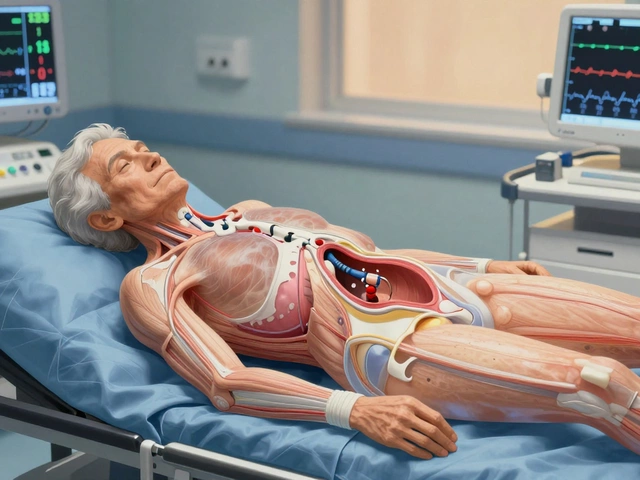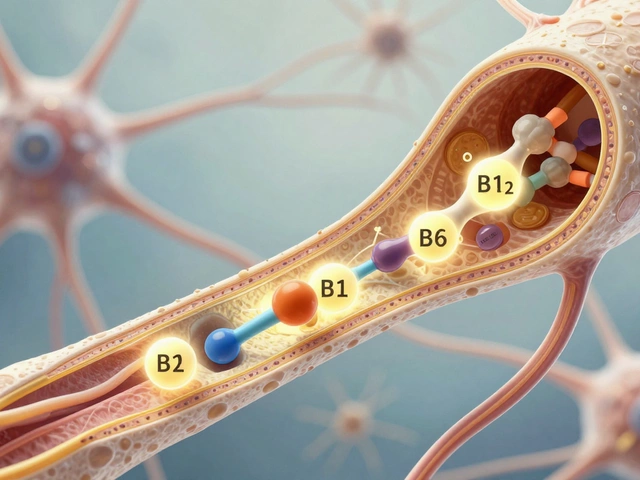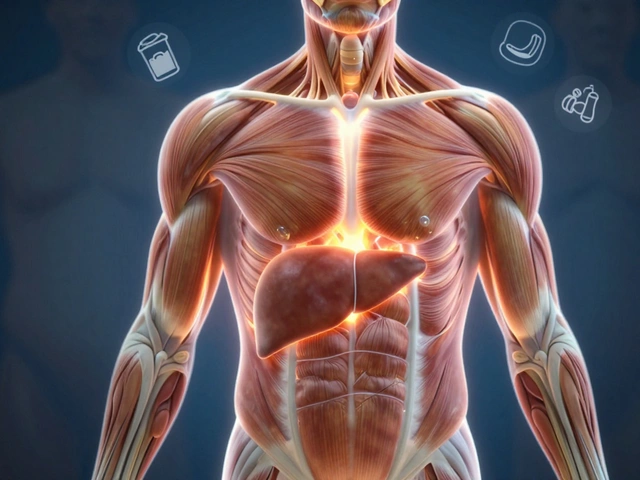Belly Fat Burning Exercise Planner
Your Weekly Plan
Your personalized plan will appear here based on your selections.
Exercise Types
HIIT
High-intensity intervals that burn maximum calories and boost metabolism.
Strength Training
Builds muscle mass to increase resting metabolic rate.
Cardio
Maintains calorie deficit and improves cardiovascular health.
When it comes to shredding that stubborn belly, most people wonder which move actually melts the fat. The short answer: high‑intensity, whole‑body workouts beat isolated crunches every time. Below you’ll get the science, the best exercises, and a simple routine you can start today.
Key Takeaways
- HIIT (high‑intensity interval training) burns the most belly fat in the shortest time.
- Strength training raises resting metabolism, keeping the belly slimmer long after the session.
- Consistent cardio (running, rowing, cycling) adds extra calorie deficit and improves insulin sensitivity.
- Combine 3‑4 HIIT sessions with 2 strength days each week for optimal results.
- Focus on total‑body effort, not just crunches, to trigger hormonal fat‑loss pathways.
Understanding Belly Fat
Before diving into the best moves, it helps to know what belly fat actually is. Visceral fat sits deep inside the abdominal cavity, surrounding organs and secreting hormones that make weight loss harder. Sub‑cutaneous fat lies just under the skin and is the softer layer most people see when they pinch their waist.
Both layers respond to calorie deficit, but visceral fat is especially sensitive to spikes in insulin and cortisol. That’s why workouts that boost metabolism and lower stress hormones work best.

Why HIIT Wins the Fat‑Burn Battle
High‑Intensity Interval Training (HIIT) is a training style that alternates short bursts of all‑out effort with brief recovery periods. Research from the American Council on Exercise (2023) shows a 20‑minute HIIT session can expend 2-3 times the calories of steady‑state cardio while keeping the body in an elevated "after‑burn" state-technically called excess post‑exercise oxygen consumption (EPOC).
EPOC means you keep torching calories for up to 48 hours after the workout, and that prolonged fat oxidation targets visceral stores around the waist. HIIT also spikes growth hormone and adrenaline, both of which mobilize fatty acids for energy.
Strength Training: The Secret Metabolic Booster
Strength Training involves resistance exercises that build muscle mass and elevate resting metabolic rate. More muscle means your body burns more calories at rest, which translates into less belly fat over time.
Compound lifts-like squats, deadlifts, and push‑presses-activate large muscle groups, raising heart rate and creating a cardio‑like effect without the joint stress of high‑impact running. Adding a few strength days each week can shave 0.5-1lb of belly fat per month, even if you keep your diet constant.
Cardio Options That Complement HIIT
While HIIT is the most efficient, traditional cardio still has a place. Running offers a steady calorie burn and improves cardiovascular health. For many, a 30‑minute jog burns about 300 calories, helping maintain the overall deficit needed for fat loss.
Cycling produces a low‑impact workout that’s friendly on knees while still torching calories. A moderate‑pace road ride can expend 250-400 calories per hour, depending on terrain.
Rowing engages the legs, core, and back simultaneously, making it a full‑body calorie burner. A 30‑minute rowing session at a vigorous pace typically burns 300-350 calories.

Putting It All Together: A 4‑Week Sample Routine
Here’s a practical schedule that blends HIIT, strength, and steady‑state cardio. Adjust the intensity based on your fitness level.
- Monday - HIIT: 5‑minute warm‑up jog, then 8 rounds of 30‑seconds sprint + 90‑seconds walk, finish with 5‑minute cool‑down.
- Tuesday - Strength (Upper Body): 3 sets of 8‑12 reps each - bench press, pull‑ups, shoulder press, rows, and planks (30sec).
- Wednesday - Active Recovery: 30‑minute easy bike ride or brisk walk.
- Thursday - HIIT (Bodyweight): 45‑second burpees, 15‑second rest, 45‑second jump squats, 15‑second rest - repeat 6 times. Finish with core circuit (30‑second each: bicycle crunches, leg raises, Russian twists).
- Friday - Strength (Lower Body): 3 sets of 8‑12 reps - squats, deadlifts, lunges, calf raises, plus a 2‑minute wall‑sit hold.
- Saturday - Steady‑State Cardio: 40‑minute moderate run or rowing session.
- Sunday - Rest: Focus on mobility, stretching, and adequate sleep.
Stick to this plan for four weeks, then switch up the HIIT intervals (e.g., 20‑second work/40‑second rest) or change the strength exercises to keep your body guessing.
Common Myths that Sabotage Belly‑Fat Loss
- Myth: Crunches alone will melt belly fat. Fact: Spot‑reduction is a myth; core work strengthens muscles but doesn’t specifically burn belly fat.
- Myth: Fasted cardio is the only way to lose belly fat. Fact: Total daily calorie balance matters more than the timing of the workout.
- Myth: You need to exercise for hours each day. Fact: Quality beats quantity-short, intense bouts are more effective than long, low‑intensity sessions.

Nutrition Tips to Amplify Your Results
Exercise does the heavy lifting, but diet decides whether the fat disappears. Here are three evidence‑backed tweaks:
- Prioritize protein. Aim for 1.2-1.6g per kg of body weight daily. Protein preserves lean muscle during calorie deficits.
- Control refined carbs. Foods high in sugary carbs spike insulin, encouraging belly‑fat storage. Swap white bread for whole grain or legumes.
- Stay hydrated. Drinking 2-3L of water a day supports metabolism and reduces false‑hunger signals.
Tracking Progress Without the Scale
Because muscle gain can mask weight loss, use these metrics instead of weight alone:
- Waist circumference. A reduction of 1-2cm per month signals true fat loss.
- Body‑fat percentage. Handheld calipers or bio‑impedance devices provide a more accurate picture.
- Performance gains. Faster sprint times or heavier lifts mean you’re getting stronger and leaner.
Frequently Asked Questions
Can I lose belly fat without doing any cardio?
Yes, strength training alone can reduce belly fat by increasing muscle mass and boosting resting metabolism. However, adding at least one cardio session per week speeds up the calorie deficit and improves heart health.
How many calories does a typical HIIT session burn?
A 20‑minute HIIT workout can burn 200-300 calories during the session, plus an additional 100-150 calories over the next 24‑48 hours due to EPOC.
Is it safe to do HIIT every day?
Most experts recommend 3‑4 HIIT sessions per week. Daily high‑intensity work can lead to overtraining, increased injury risk, and hormonal imbalances that actually promote fat storage.
Do I need special equipment for the best belly‑fat burning workout?
No. Bodyweight HIIT (burpees, jump squats, mountain climbers) works as well as treadmill sprints. If you have a rowing machine or kettlebells, they add variety but aren’t required.
How long will it take to see a smaller waist?
Consistent effort usually yields visible waist reduction in 4-6 weeks, assuming a moderate calorie deficit (250-500kcal/day) and the routine outlined above.
Bottom line: the most effective belly‑fat burning workout is a mix of high‑intensity intervals, full‑body strength work, and occasional steady‑state cardio, paired with a protein‑rich, low‑refined‑carb diet. Stick to the plan, track real progress, and the belly will start to shrink.










